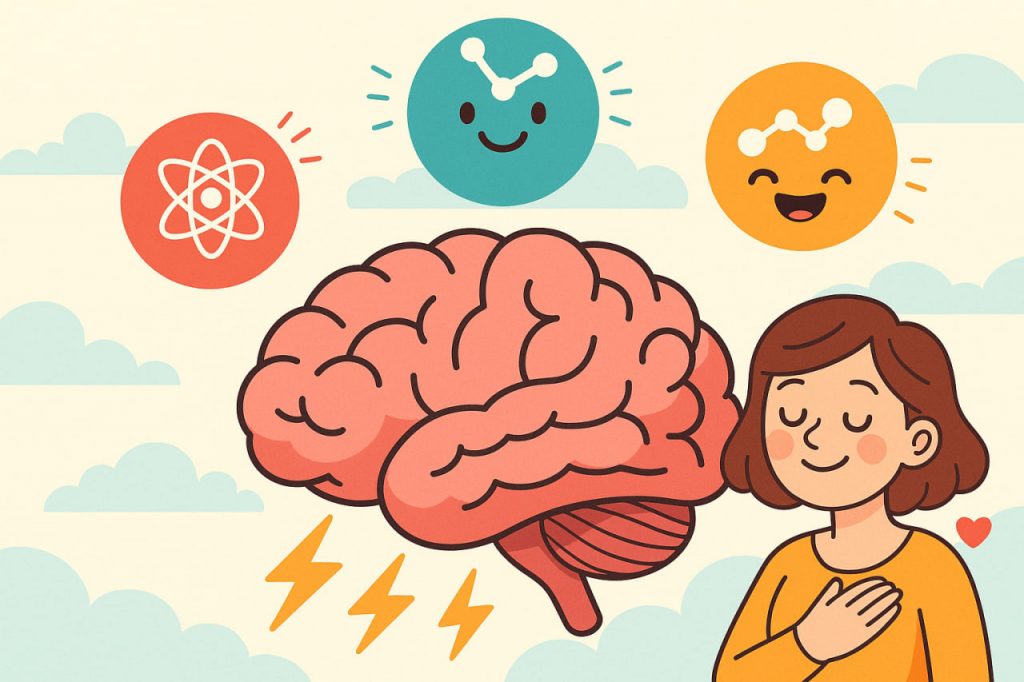Feelings of happiness, motivation, and emotional well-being are deeply connected to chemical messengers in the brain called neurotransmitters. Among these, dopamine, serotonin, and endorphins are often referred to as the “happiness hormones” because they play major roles in regulating mood, reward, and pleasure. Understanding how these chemicals work offers insight into human behavior, mental health, and overall emotional balance.
Dopamine: The Motivation Molecule
Dopamine is a neurotransmitter associated with reward, motivation, and goal-directed behavior. It is released in the brain when we anticipate or experience something pleasurable, such as eating delicious food, accomplishing a task, or receiving praise.
Dopamine doesn’t just respond to reward—it drives us to seek it. This is why it plays a key role in habit formation and addiction, as the brain starts to associate specific actions with pleasure. It’s also important for learning, movement, and attention, especially in regions like the prefrontal cortex and the basal ganglia.
Low dopamine levels are linked to lack of motivation, fatigue, and even conditions like Parkinson’s disease or depression. However, excess dopamine in certain areas of the brain is also associated with impulsivity and risk-taking behavior.
Serotonin: The Mood Stabilizer
Serotonin is often described as the regulator of mood, anxiety, and sleep. Unlike dopamine, which is tied to short-term reward, serotonin is linked to long-term emotional well-being. It helps promote feelings of contentment, calmness, and emotional stability.
This neurotransmitter influences many bodily systems, including digestion, blood clotting, and the circadian rhythm. About 90% of the body’s serotonin is actually found in the gastrointestinal tract, although its mood-regulating functions occur in the brain.
Imbalances in serotonin levels have been associated with depression, anxiety disorders, and sleep disturbances. Many antidepressant medications, such as SSRIs (Selective Serotonin Reuptake Inhibitors), work by increasing the availability of serotonin in the brain.
Endorphins: The Natural Painkillers
Endorphins are a group of peptides that act as natural painkillers and mood elevators. They are released by the central nervous system in response to stress, physical exertion, or pain. One of the most well-known effects of endorphins is the “runner’s high”, a euphoric feeling experienced after prolonged exercise.
These molecules bind to opioid receptors in the brain, reducing the perception of pain and producing a sense of well-being. Endorphins are part of the body’s survival mechanism, helping us push through injuries or stressful situations.
Activities such as laughter, physical activity, music, and even meditation have been shown to increase endorphin release. Unlike dopamine, which is linked to external rewards, endorphins often act in response to internal or physical states.
The Balance Between Neurotransmitters
Although each of these chemicals has distinct functions, emotional well-being often depends on the balance between them. For example, dopamine may give us the drive to pursue goals, while serotonin helps us feel satisfied once we achieve them. Endorphins can buffer pain and provide emotional relief when we are under pressure.
Disruptions in this balance, due to chronic stress, poor sleep, diet, or medical conditions, can lead to mental health challenges. While the body naturally regulates these systems, lifestyle factors—like physical activity, social interaction, and healthy routines—can help support a healthy neurochemical state.
Conclusion
Dopamine, serotonin, and endorphins are essential components of the brain’s emotional architecture. Together, they influence motivation, mood, and how we experience pleasure and stress. Although their popular nickname—“happiness hormones”—simplifies their roles, these neurotransmitters are fundamental to human behavior and mental health. Scientific understanding of these systems continues to evolve, offering insights into treatments for mood disorders and strategies for promoting well-being.
Glossary
- Neurotransmitter — a chemical substance that transmits signals between nerve cells in the brain and body.
- Dopamine — a neurotransmitter involved in reward, motivation, and movement.
- Serotonin — a neurotransmitter that regulates mood, sleep, and emotional stability.
- Endorphins — natural peptides that reduce pain and enhance mood.
- Prefrontal cortex — part of the brain involved in decision-making and social behavior.
- Basal ganglia — a group of brain structures involved in movement and reward.
- Circadian rhythm — the body’s internal clock that regulates sleep-wake cycles.
- Opioid receptors — receptors in the brain that mediate the effects of endorphins and pain-relieving substances.


